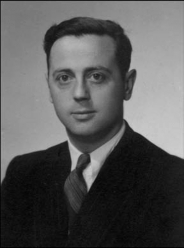- HOLSTERS
- BELGIUM (see also List of Individuals)\
 20.5.1914 Boom/B - 1.1.1994 Reet/B\Hendrik Holsters graduated from Gent University as a civil engineer in 1937. He was employed from 1938 at the special service Zeeschelde in Antwerp and collaborated with the Hydraulic Laboratory of Borgerhout. In 1946, he joined the public works company Socol and moved to Belgian Congo. Upon returning he was the vice-director of Socol and there in charge of various civil engineering projects in Syria, Iraq, the Belgian Congo and the Benelux countries. From 1953, Holsters participated in the Special Commission of the Delta plan and then was a consultant for the Dutch Waterstaat in the closure of the Volkerak bay. He directed from 1962 Société Générale de Dragage and there again involved in the Delta plan, Netherlands large project to win land from the sea by dike structures. In 1975, he became a Council Member of the International Association of Dredging Companies IADC and in 1976 was awarded the Karel Bollengier Prize from Gent University. Holsters retired in 1979.\During World War II, disaster was caused with artificially released floods. Holsters' primary contribution to hydraulic research was his 1947 paper relating to the flood movement in rivers. Adhémar Barré de Saint-Venant (1797-1886) derived in 1871 a set of partial differential equations for one-dimensional unsteady open channel flows. These equations were investigated mainly analytically by neglecting terms, or by the so-called Method of characteristics until computers became available. Additions to the latter approach were made by Junius Massau (1852-1909), Renaud Ré (1920-) and Johen Christoph Schoenfeld (1918-2005). Instead of the Method of characteristics, Holsters proposed a Finite Difference Method using a rectangular grid in the spatial and in the temporal coordinate systems. He introduced the Influence lines and proposed an alternative solution for the Saint Venant equations. The limitations of his approach were outlined in the 1953 research, along with some examples for computational details.\Holsters, H. (1947). Le calcul du mouvement non-permanent dans les rivières par la méthode dite des "lignes d'influence". Revue Générale de l'Hydraulique 13(37): 36-39; 13(38): 93- 94; 13(39): 121-130; 13(40): 202-206; 13(41): 237-245.Holsters, H. (1953). Le calcul du mouvement non permanent dans les rivières - Note sur l'exactitude des résultats. La Houille Blanche 8(8/9): 495-509.Holsters, H. (1959). Stabilité et convergence dans les calculs numériques. Bulletin CERESLiège 10: 451-482.Holsters, M. (2004). Hendrik Holsters. Personal communication. P
20.5.1914 Boom/B - 1.1.1994 Reet/B\Hendrik Holsters graduated from Gent University as a civil engineer in 1937. He was employed from 1938 at the special service Zeeschelde in Antwerp and collaborated with the Hydraulic Laboratory of Borgerhout. In 1946, he joined the public works company Socol and moved to Belgian Congo. Upon returning he was the vice-director of Socol and there in charge of various civil engineering projects in Syria, Iraq, the Belgian Congo and the Benelux countries. From 1953, Holsters participated in the Special Commission of the Delta plan and then was a consultant for the Dutch Waterstaat in the closure of the Volkerak bay. He directed from 1962 Société Générale de Dragage and there again involved in the Delta plan, Netherlands large project to win land from the sea by dike structures. In 1975, he became a Council Member of the International Association of Dredging Companies IADC and in 1976 was awarded the Karel Bollengier Prize from Gent University. Holsters retired in 1979.\During World War II, disaster was caused with artificially released floods. Holsters' primary contribution to hydraulic research was his 1947 paper relating to the flood movement in rivers. Adhémar Barré de Saint-Venant (1797-1886) derived in 1871 a set of partial differential equations for one-dimensional unsteady open channel flows. These equations were investigated mainly analytically by neglecting terms, or by the so-called Method of characteristics until computers became available. Additions to the latter approach were made by Junius Massau (1852-1909), Renaud Ré (1920-) and Johen Christoph Schoenfeld (1918-2005). Instead of the Method of characteristics, Holsters proposed a Finite Difference Method using a rectangular grid in the spatial and in the temporal coordinate systems. He introduced the Influence lines and proposed an alternative solution for the Saint Venant equations. The limitations of his approach were outlined in the 1953 research, along with some examples for computational details.\Holsters, H. (1947). Le calcul du mouvement non-permanent dans les rivières par la méthode dite des "lignes d'influence". Revue Générale de l'Hydraulique 13(37): 36-39; 13(38): 93- 94; 13(39): 121-130; 13(40): 202-206; 13(41): 237-245.Holsters, H. (1953). Le calcul du mouvement non permanent dans les rivières - Note sur l'exactitude des résultats. La Houille Blanche 8(8/9): 495-509.Holsters, H. (1959). Stabilité et convergence dans les calculs numériques. Bulletin CERESLiège 10: 451-482.Holsters, M. (2004). Hendrik Holsters. Personal communication. P
Hydraulicians in Europe 1800-2000 . 2013.
